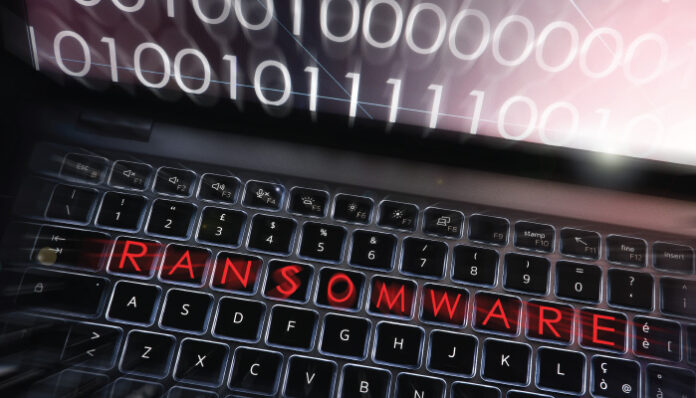Cyber-attacks have become faster, smarter, and stronger than ever before. Ransomware is one of the deadliest and most damaging threats. It gains entry into the enterprise through the simplest ways but impacts its finances and reputation.
Companies need to take crucial steps to mitigate and eliminate its severe impacts. The latest cyber-security technologies help identify the risks of ransomware and provide many solutions to mitigate these threats.
They need to follow some key steps that will help them keep their business safe and secure.
What is Ransomware?
IBM defines ransomware as:
“Ransomware is a type of malware where threat actors penetrate networks, servers, and systems, attacks on data and other important files. The attacks are severe as they deny access to these environments and threaten for a good ransom from victims.”
According to its report, IBM Security X-Force Threat Intelligence Index 2023

Initially, the attackers demanded a ransom in the form of encryption keys or access to data. The only mitigation strategy was to practice continuous data backups to lessen the impact. They could even escape without paying the ransom if data were safe elsewhere.
Frequently, it saved millions in costs and preserved the reputation as well.
However, in recent years, ransomware attacks have evolved and have become more severe and intense. It includes double-extortion and triple-extortion attacks even after businesses maintain backups.
Such attacks now add the threat of selling data and leaking it online, making it open to use and misuse. At the same time, triple-extortion attacks threaten to use data to attack business partners and customers.
Ransomware attack demands have also grown, and so has the payment amount.
As per IBM’s report Cost of a Data Breach Report 2023, the average cost of a data breach globally was USD 4.45 million in 2023. This has been an increase of 15% over three years.
So, companies need to prepare rock-solid strategies to mitigate these attacks or keep their business assets safe from their impact. Many leading companies have successfully detected and mitigated ransomware attacks using the right tools and technologies.
IBM’s report also found that

They used AI to increase security and automation, saving approximately USD 1.76 million.
Types of Ransomware and How They Attack
Two types of ransomware are common:
- Encrypting ransomware that keeps the data hostage by encrypting it.
- Non-encrypting ransomware or screen-locking ransomware that blocks access to the entire operating system.
Their attack strategies are:
- Mobile ransomware: Infects and affects mobile devices through malicious apps when downloaded. It’s usually non-encrypting ransomware.
- Destructive or wipers ransomware: These destroy data when the ransom amount is unpaid.
- Leakware/Doxware ransomware: It steals or transfers (exfiltration) sensitive data, and attackers threaten to publish it.
- Scareware: It tries to scare users to pay ransom. This threat ensured that many companies install antivirus or anti-malware software for a law enforcement agency.
However, it mainly encrypts data, blocks access to devices in use, or scares victims to download ransomware.
These attacks infect a business network or devices using different methods and vectors. But mostly, ransomware begins from:
- Phishing emails: from a trusted source, with clickable links and attachments.
- Credential thefts: when attackers steal authorized business credentials from cloud networks, infrastructure, and digital assets.
- Software vulnerabilities: easy targets for ransom incidents.
However, leading companies are successfully mitigating such attacks by applying these steps.
Steps to Mitigate Ransomware Attacks
- Tools/ technologies that help:
- Remote Desktop Protocol for secured network connections, servers, and cloud infrastructure. It uses strong passwords, strict access, and network-level authentication. It also initiates regular software updates to keep security patches updated.
- Multi-factor authentication (MFA) to keep critical assets secure from security threats like ransomware. The authentication keys create firewalls to enter servers, networks, and other digital assets.
- Security patches to close the security gaps in legacy systems, software, and online connected devices. They mainly patch the Windows operating system, which is one vulnerable way for ransomware to enter systems.
- Firewalls and AI to automate data backups are key solutions to protect businesses against ransomware.
- Companies should establish routine network backups and keep software updated.
Restricting the backup access is an effective security method. Security software updates also ensure that the security functions protect against ransomware.
- Strict cybersecurity policies need to be in place. The policies should document all necessary steps of precautions. It should monitor cyber-security tools and technologies and prepare for preventive actions.
- Routine network security assessments include monitoring tools to secure networks, firewalls, authentication codes and systems, antivirus software, and more.
Frequent testing of tools will better give assessment results and boost protection against ransomware attacks
- Smarter password landscape will prevent ransomware attacks. Building and updating complex passwords after a period will help avoid ransomware attacks.
- Stronger endpoint security patches eliminate vulnerabilities- for this, companies should restrict access to databases and provide a secured corporate network system for remote functions.
- Configuration settings should be strong to keep endpoints safe from ransomware attacks.
- A robust Intrusion Detection System (IDS) to monitor networks for breaches can also flag issues on malicious activities and report attacks when they happen. An IDS is important because it will notify leaders of suspicious ransomware activities in real-time.
Also Read: Good Email Security Policy Can Prevent Advancing Ransomware Attacks
Conclusion
The current digital businesses are more targeted using ransomware. However, with these steps, companies should equally build strong defensive strategies against the attacks.
Applying security controls and an automated system that detects ransomware threats is a must. Companies that employ the right security controls will stand to gain huge benefits and keep their business assets safe.
Defocusing on building the right strategies with the right tech and tools can harm businesses severely.
For more such updates follow us on Google News ITsecuritywire News. Please subscribe to our Newsletter for more updates.









